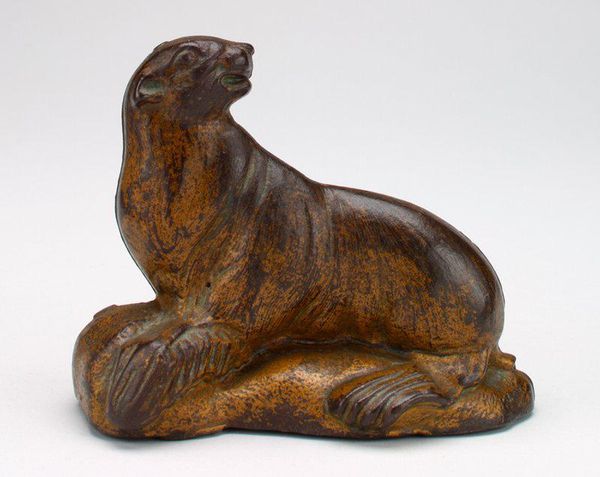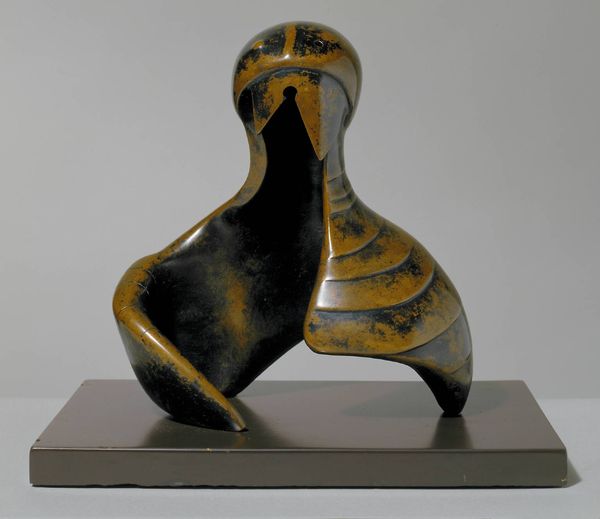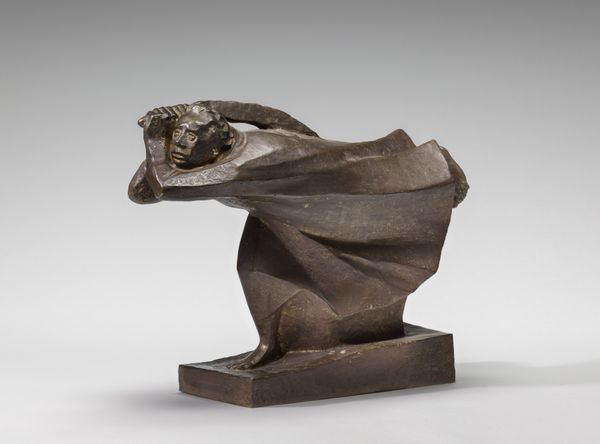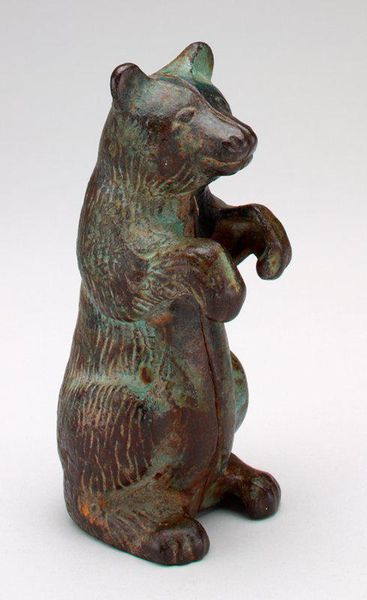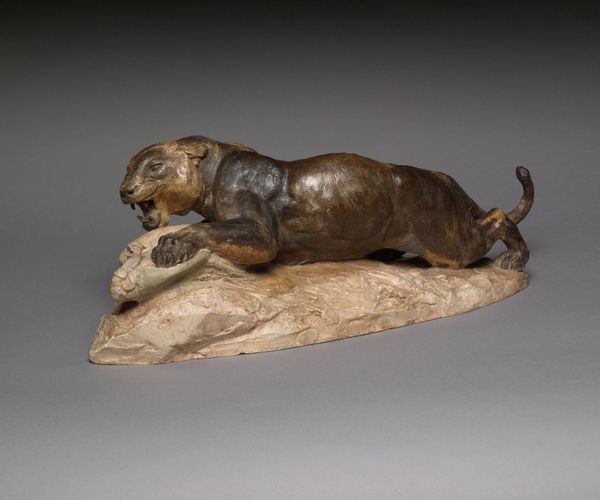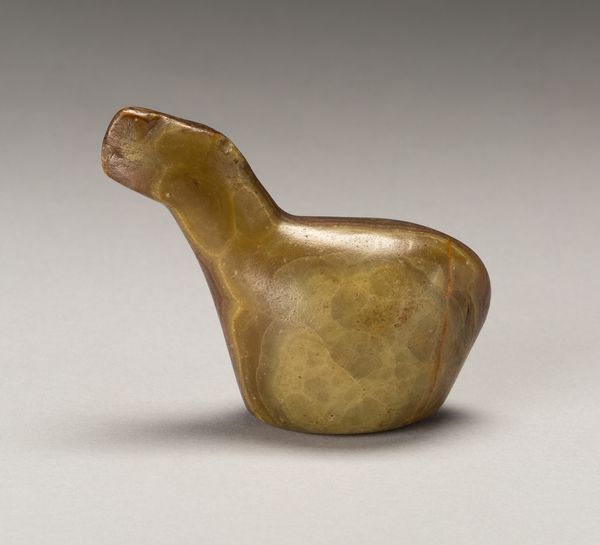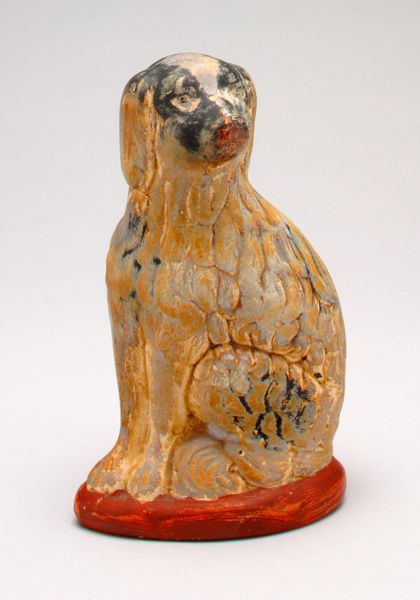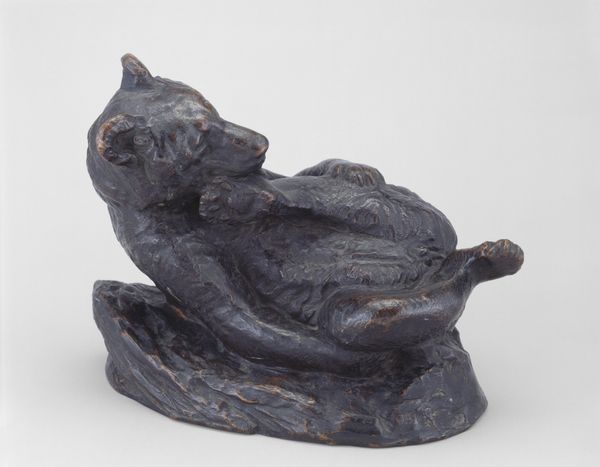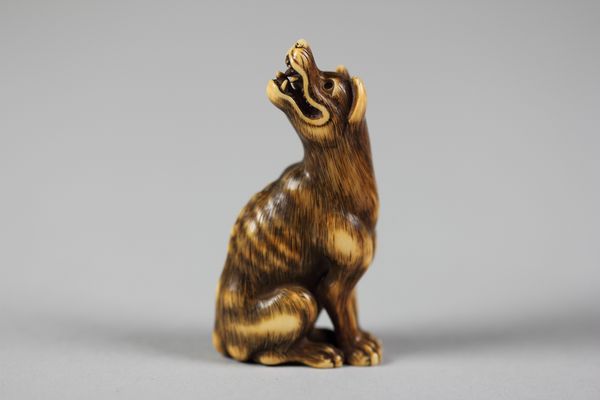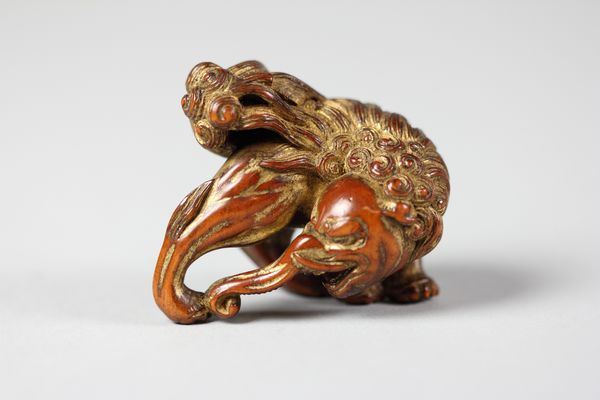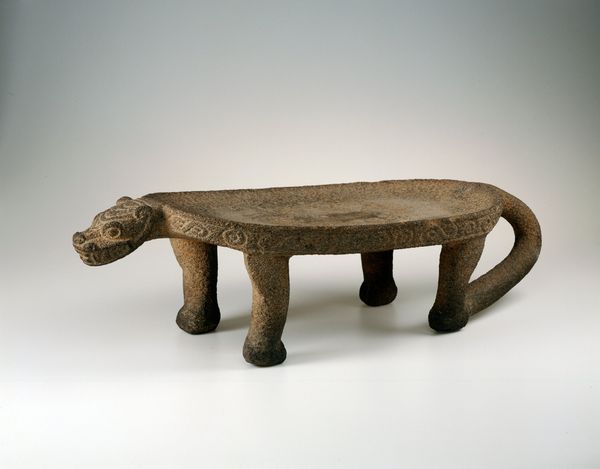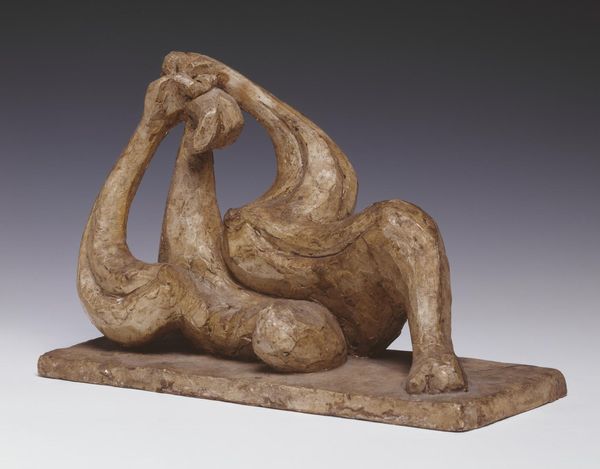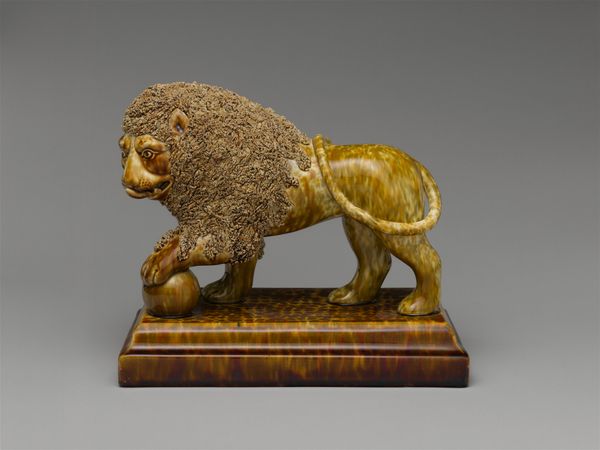
carving, metal, sculpture, ivory
#
carving
#
metal
#
figuration
#
sculpture
#
ivory
#
indigenous-americas
Dimensions: 5 x 7 1/2 in. (12.7 x 19.05 cm)
Copyright: Public Domain
Curator: Here we have a fascinating Ulu, or woman’s chopping knife, crafted circa 1920-1930. The knife and handle, combining metal and carved ivory, originate with the Nuniwarmiut, or Cup’ik people. You'll find it residing here at the Minneapolis Institute of Art. Editor: My initial impression is such a compelling contrast, almost a visual oxymoron. The sleek, playful ivory seal surmounting that rugged, timeworn metal blade… it’s an incredible mix of delicacy and raw utility. What first catches your eye? Curator: The symbolism is rather layered, wouldn't you say? The seal, prominently positioned, carries powerful associations in Cup’ik culture – representing resourcefulness, adaptability, and sustenance, all vitally important. As a tool primarily used by women, the Ulu becomes imbued with notions of feminine strength and skill within their society. Editor: Absolutely, and to see that ivory worked so meticulously into the shape of a seal. The level of detail in capturing its form suggests a deep respect for the animal… a tangible connection to the natural world. Makes you consider the emotional investment involved in crafting a tool so intimately tied to daily life. Curator: Precisely. Function wasn't solely the driving force, and that much is evident. It speaks to a deep-seated understanding, respect, even reverence for the animal world – turning something pragmatic into an emblem. And what about the Ulu shape itself? Does that resonate at all? Editor: Definitely. It reminds me of the horizon, like the curve of a coastline where land meets sea. It is that sort of feeling of transition and fluidity which might hint to something subconscious… that sort of flow where culture shapes life. Curator: It’s a tangible reminder of tradition. Each time that Ulu was held, that horizon line must have been present on the palm of someone's hand, almost giving them direction. Editor: Indeed. Looking closer, I wonder about the specific stories embedded in this piece – the individual hand that shaped it, the lives it touched. It truly highlights the intimate bond between culture, craft, and lived experience. Curator: A beautiful synthesis, I think, where a daily tool becomes a narrative object. Editor: A sharp observation for a cutting-edge blade. Thanks!
Comments
No comments
Be the first to comment and join the conversation on the ultimate creative platform.
